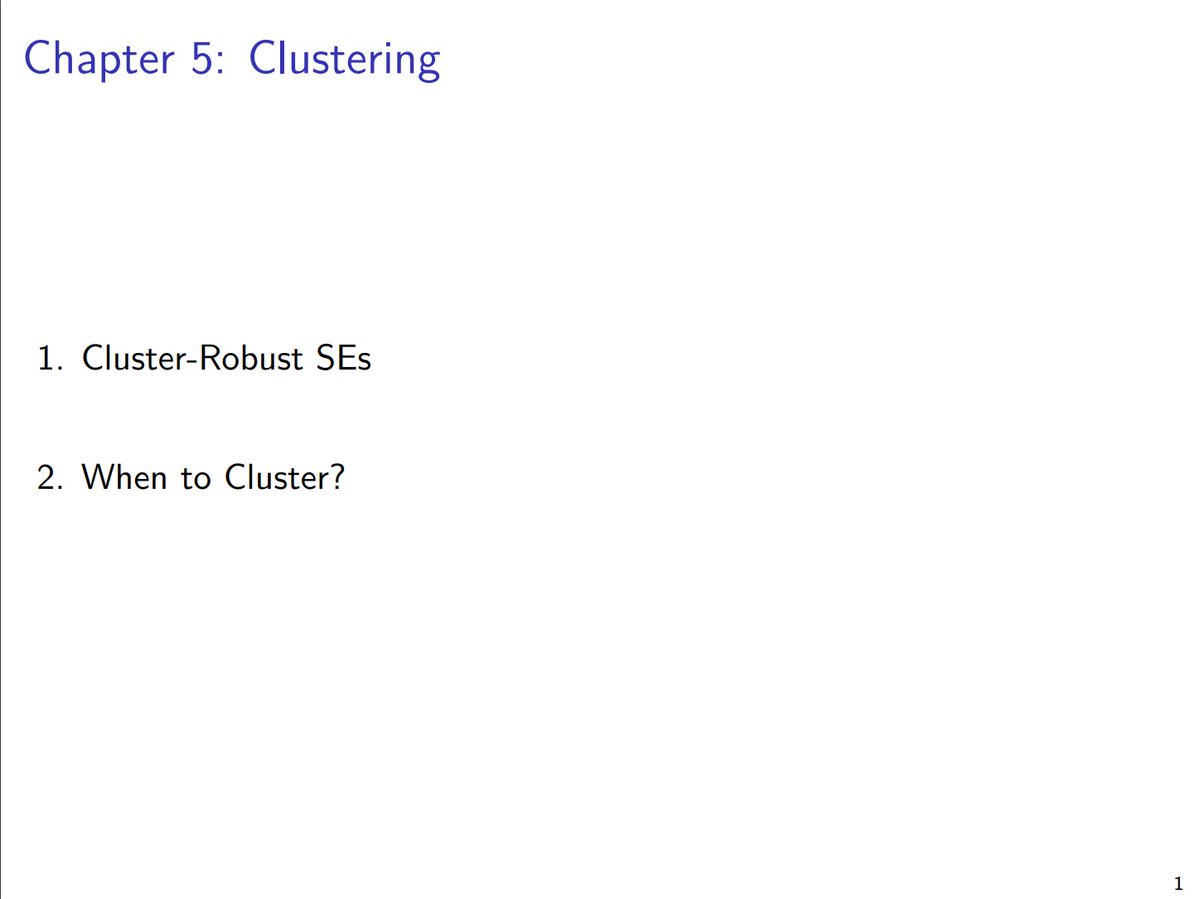Happy New Year! Kirill @Borusyak and I have a New (short) Paper on the infamous "negative weights" issue recently raised for TWFE and other popular OLS/IV specifications
Here's an (even shorter) summary thread dropbox.com/scl/fi/gfvv9bu…

Here's an (even shorter) summary thread dropbox.com/scl/fi/gfvv9bu…

We show that design-based specifications, which leverage assumptions on the assignment process of exogenous shocks, also have negative "ex-post" weights (i.e. ones that depend on the realized shocks)
However....
However....

Unlike w/ TWFE and other specifications that instead leverage a model for unobservables (e.g. parallel trends), these negative weights *are not a problem* for design-based IV and OLS
Why?
Why?
In design-based specifications, the estimand also has an average-effect representation with "ex ante" weights: the expectations of ex-post weights over the exogenous shocks
As it turns out, these weights are *always* convex for design-based OLS regressions
As it turns out, these weights are *always* convex for design-based OLS regressions

We prove a general version of this result that covers design-based IV. Here ex-ante weights are convex under a first-stage monotonicity condition
Importantly, this condition & the identifying mean-independence condition are weaker than those typically used to show convexity


Importantly, this condition & the identifying mean-independence condition are weaker than those typically used to show convexity


This is helpful for formula treatments and instruments, which combine exogenous shocks with non-random measure of exposure (i.e. )
Our mean-independence condition, in particular, builds on an earlier one we used in the shift-share paper w/ @XJaraveldropbox.com/scl/fi/4e24ujd…
Our mean-independence condition, in particular, builds on an earlier one we used in the shift-share paper w/ @XJaraveldropbox.com/scl/fi/4e24ujd…
We close with some important caveats, with connections to recent work by @CdeChaisemartin, @paulgp, @ArkhangelskyD, @jondr44, @pedrohcgs (and other less-online folks)
Thanks for reading! I'll be presenting this at #ASSA2024 if you'd like to see more

Thanks for reading! I'll be presenting this at #ASSA2024 if you'd like to see more
https://twitter.com/instrumenthull/status/1740441233338597440?t=Egl0qipeuUNBbD2ROI__vA&s=19

• • •
Missing some Tweet in this thread? You can try to
force a refresh





















